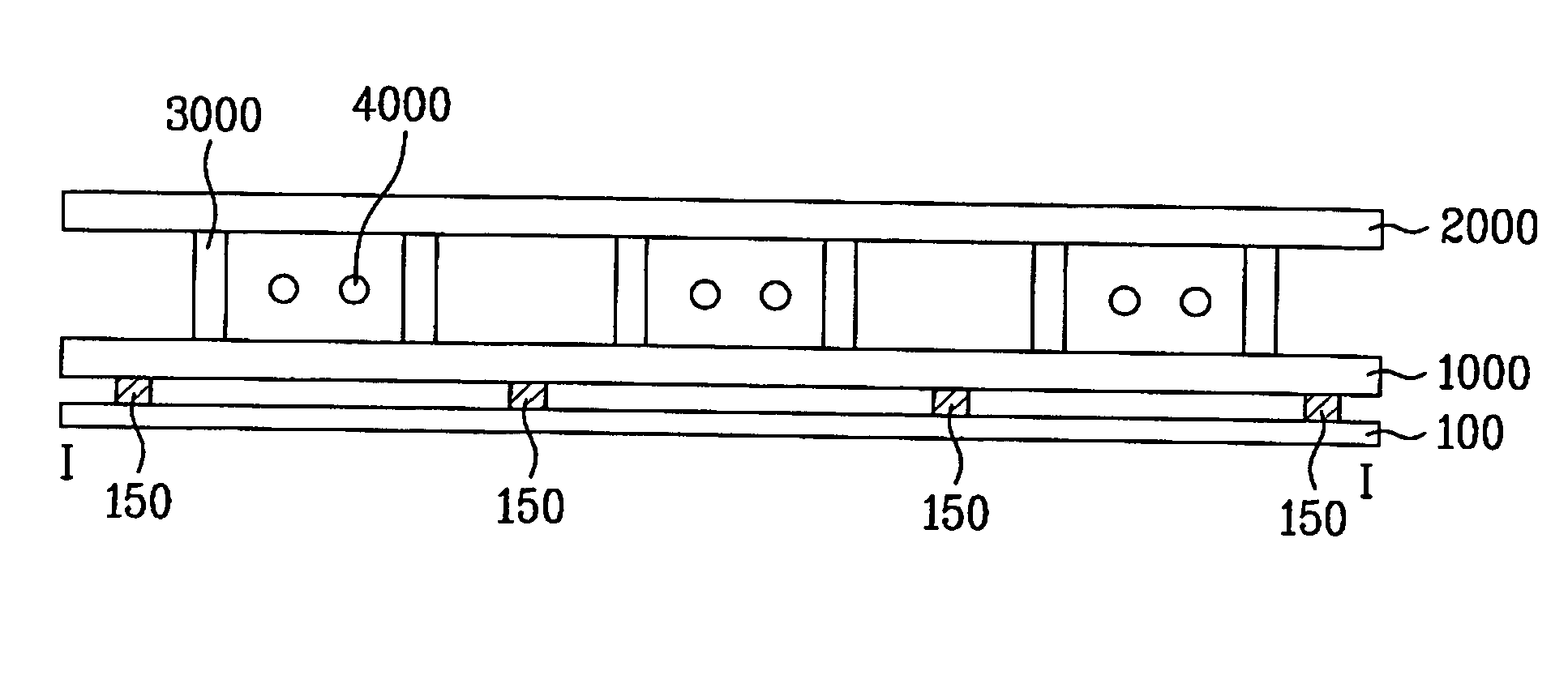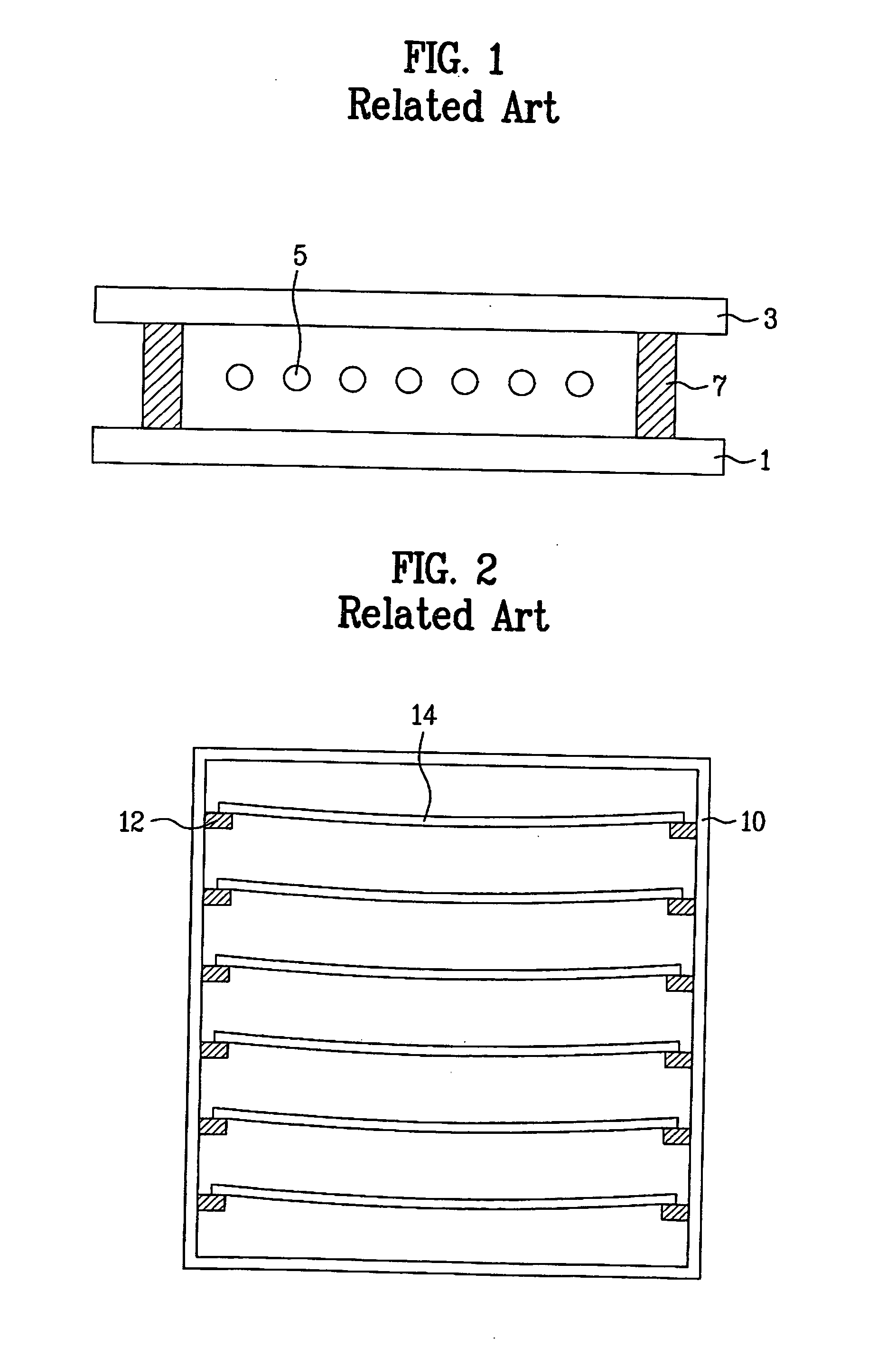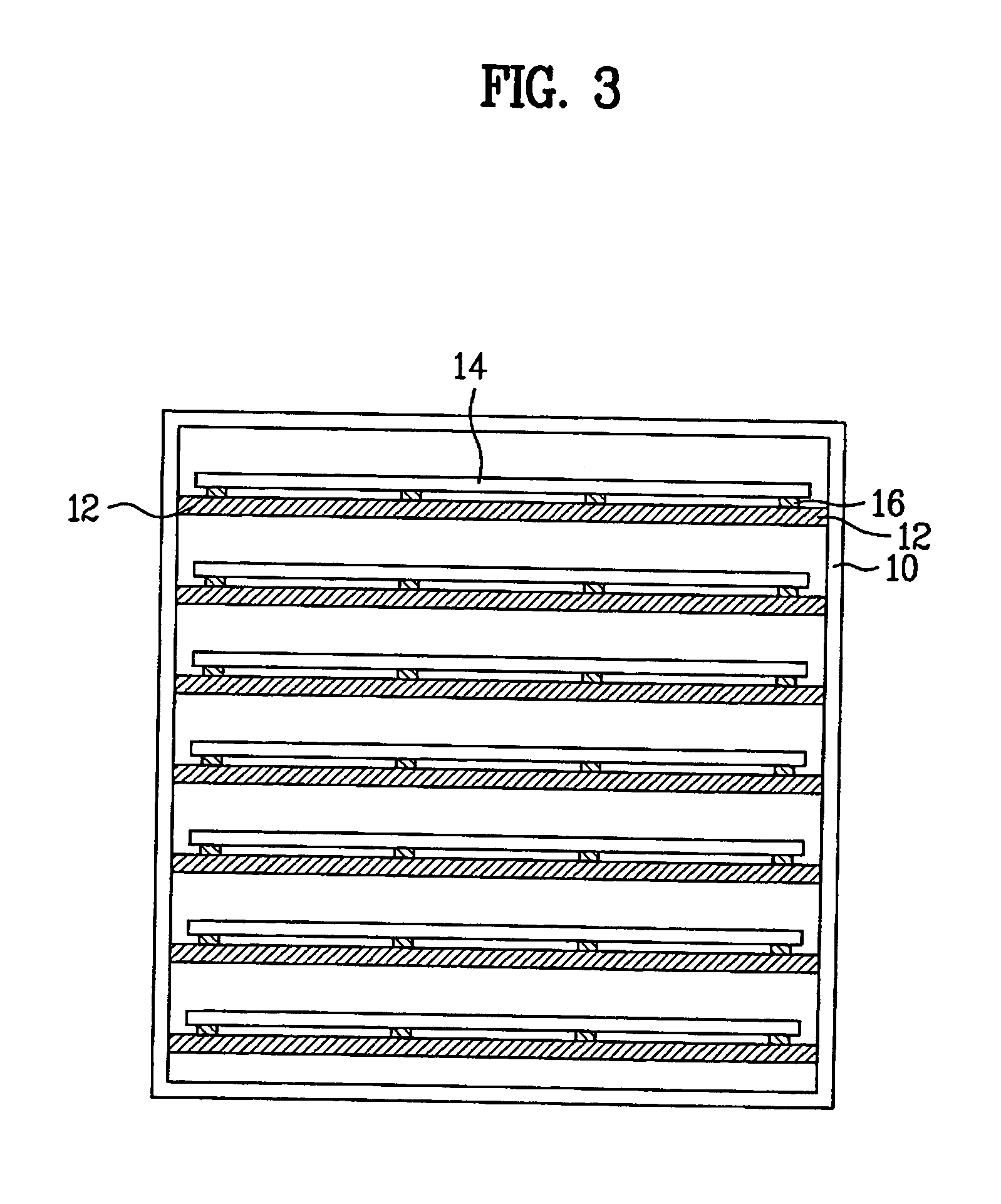Heat curing device and method of fabricating liquid crystal display device using the same
- Summary
- Abstract
- Description
- Claims
- Application Information
AI Technical Summary
Benefits of technology
Problems solved by technology
Method used
Image
Examples
first embodiment
[0046] As shown in FIG. 4, the heat curing device according to the present invention includes a set of multi-staged supports 100, protrusion structures 150 formed on each support 100, a plurality of toothed wheels or gears 200 respectively connected with the multi-staged supports 100, a belt 300 connected with the gears 200, and a grip 400 connected with at least one of the gears 200.
[0047] The supports 100 are positioned in a chamber to support the substrate. The supports 100 are arranged in multiple stages with supports of each multi-stage arranged between the lower portion and the upper portion of the chamber. The ends of each support 100 are respectively supported by a first mechanism 170a and a second mechanism 170b. Although the supports 100 are illustrated as having rectangular shaped sections in the drawings, the sections may have other shapes such as a polygonal shape.
[0048] At least two sets of supports 100 may be arranged horizontally in a row to support a substrate. In ...
fourth embodiment
[0060]FIG. 7 is a perspective view illustrating a heat curing device according to the present invention. The heat curing device shown in FIG. 7 employs links 500 and a link bar 600 to rotate the multi-staged supports 100 simultaneously.
[0061] As shown in FIG. 7, the heat curing device according to the fourth embodiment of the present invention includes multi-staged supports 100, protrusion structures 150 formed on each support 100, a plurality of links 500 respectively connected with the multi-staged supports 100, a link bar 600 connected with the links 500, and a grip 400 connected with at least one of the links 500.
[0062] Since the supports 100 and the protrusion structures 150 are identical to those of the first embodiment, their description will be omitted.
[0063] The links 500 are connected with the supports 100 and to a link bar 600. At least one of the links 500 is connected to the grip 400.
[0064] When the grip 400 is rotated, a link 500 connected to the grip 400 is also ro...
fifth embodiment
[0067]FIG. 8 is a perspective view illustrating a heat curing device according to the present invention. Unlike the heat curing device shown in FIG. 4 in which the supports are rotated by rotation of the grip, the heat curing device shown in FIG. 8 is structured to automatically rotate all the supports using rotation supplied by a motor.
[0068] The detailed description of elements of the heat curing device according to the fifth embodiment of the present invention that are the same as those of the heat curing device according to the first embodiment of the present invention will be omitted.
[0069] In the heat curing device according to the fifth embodiment of the present invention, a belt 300 is rotated by a motor 700, and each of the gears 200 is rotated by rotation of the belt 300. In addition, each of the supports 100 is rotated by rotation of a respective gear 200. As a result, all the supports 100 are rotated using rotation supplied by the motor 700.
[0070] When a support 100 is...
PUM
 Login to View More
Login to View More Abstract
Description
Claims
Application Information
 Login to View More
Login to View More - R&D
- Intellectual Property
- Life Sciences
- Materials
- Tech Scout
- Unparalleled Data Quality
- Higher Quality Content
- 60% Fewer Hallucinations
Browse by: Latest US Patents, China's latest patents, Technical Efficacy Thesaurus, Application Domain, Technology Topic, Popular Technical Reports.
© 2025 PatSnap. All rights reserved.Legal|Privacy policy|Modern Slavery Act Transparency Statement|Sitemap|About US| Contact US: help@patsnap.com



